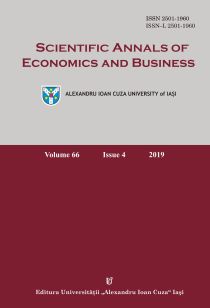Romanian Interbank Interest Rates and Central Bank’s Monetary Policy
Romanian Interbank Interest Rates and Central Bank’s Monetary Policy
Author(s): Giovanni Verga, Nicoleta VasilcovschiSubject(s): Economy, Business Economy / Management, Financial Markets, Public Finances
Published by: Editura Universităţii »Alexandru Ioan Cuza« din Iaşi
Keywords: interbank interest rates; Romanian Central Bank (NBR); liquidity; bank interest rates; European Central Bank (ECB); Fed; Eurozone; Robor and Robid;
Summary/Abstract: Interbank rates are affected by the monetary policy of a country and represent a link to other financial and credit markets. In 2007, Romania became a member of the European Union and its central bank, the National Bank of Romania (NBR), joined the European System of Central Banks (ESCB) but not the Eurosystem. This paper analyses the role of the central bank and the use of its instruments concerning interbank rates. The research evaluates the influence of the Romanian Central Bank on interbank rates and shows that the policy rate and bank liquidity are among the main determinants of interbank rate movements. It is also presented that the NBR’s deposit and lending rates can limit the free movements of the interbank rate of interest. This research confirms that interbank interest rates influence bank rates strongly. The methodology used in this research includes cointegration, dynamic econometric measurement and analyses with Granger causality. Our research uses mainly ROBID and ROBOR of different maturities, showing that the influence of the Romanian Central Bank (NBR) on the interbank rate is strong, while the influence of the ECB and Fed is weak.
Journal: Scientific Annals of Economics and Business
- Issue Year: 66/2019
- Issue No: 4
- Page Range: 487-506
- Page Count: 20
- Language: English

